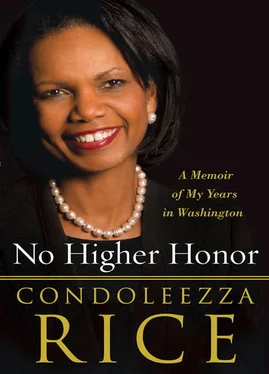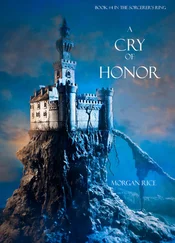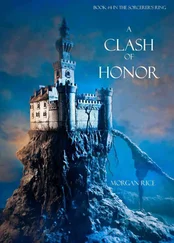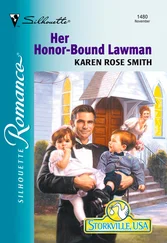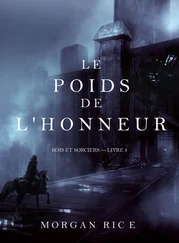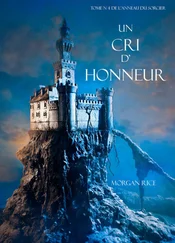The next step was to get congressional approval before the end of the legislative session, and time was running out. Jeff Bergner, the assistant secretary for legislative affairs, told me we were short on votes. But a last-minute deal satisfied New York Congressman Gary Ackerman, and with him came the requisite Democratic votes. The House passed the legislation 298 to 117.
Congress’s arcane rules made it much easier to get a vote in the House than in the Senate. Unfortunately, the Senate was out of time, and it had apparently been the administration’s fault. When the White House had communicated to the Senate leadership the administration’s priorities, the civil-nuclear deal was somehow not on the list. That had begun a comedy of errors that almost cost the President one of his signature foreign policy achievements. When my legislative people at State told me what had happened, I called Steve and then Josh Bolten. The chagrined Josh admitted the mistake and said he’d do what he could. I talked to Senate Majority Leader Harry Reid. He indicated that he could now only bring the bill to the Senate floor through a unanimous-consent agreement, but he couldn’t get that done because an anonymous hold had been placed on the bill. Unanimous consent could be achieved only once the hold was lifted, and that seemed a far way off.
I called the President. “Hi,” he said. “What’s wrong?”
I don’t know if he heard the irritation in my voice that quickly or if Steve had told him. “Mr. President,” I said, “thanks to a White House screw-up, Barack Obama or John McCain is going to be signing your treaty with India.” I then explained what had happened.
The President hung up, and a few minutes later Josh called back. “We’ll get it done,” he said. I still don’t know to this day what Josh did, but we got the vote.
The historic agreement passed the Senate 86 to 13, and the President signed the United States–India Nuclear Cooperation Approval and Nonproliferation Enhancement Act into law on October 8 in an East Room ceremony. With domestic approval from Congress in hand, I joined my Indian counterpart, Pranab Mukherjee, in formally signing the agreement at the State Department two days later. The accord would now permit the United States to exchange peaceful nuclear technology with India and, perhaps more important, establish a foundation for a new strategic partnership with New Delhi. I was proud of what we had achieved, especially of the core team that had gotten it done.
But it was also a moment when cooperation between the executive branch and Congress had overcome strong resistance to change. I looked around at the legislators gathered in the East Room at the President’s signing ceremony. Two of the House members who’d been most helpful in getting the legislation started—as in so many other matters—weren’t there. Henry Hyde, a former Republican congressman from Illinois, and my great friend Tom Lantos, the former chairman of the House Foreign Affairs Committee, had both died within the last year. I especially felt the loss of Tom. The northern California congressman was a Hungarian refugee from the Nazi terror and Communist repression and the House’s only Holocaust survivor. Tom was a fierce fighter for human rights and freedom; he had even been arrested about two years before his death while protesting outside Sudan’s embassy against the government’s mass slaughter of civilians in Darfur.
Tom and I would get together from time to time, and he was always there for me, even when we didn’t agree. I’d become close to his family. One day during one of our meetings, Tom was almost in tears. His beautiful granddaughter, Charity Sunshine, then twenty years old, had been diagnosed with a very rare and almost always fatal disease, idiopathic pulmonary hypertension. She was an operatic soprano who possessed, as he put it, “the voice of an angel.” Right then and there we came up with an idea: I’d accompany Charity in a performance at the Kennedy Center to raise awareness of the disease. The night of the performance was very special indeed. Doctors, researchers, and patients for whom the disease had become a way of life all turned out. So too did many diplomatic personnel and members of Congress. Tom and his wife, Annette, beamed as Charity sang some of their favorite show tunes. Remarkably and thankfully, even after a double lung transplant, she’s still singing today. And we did raise the awareness of those who hadn’t known about this near-orphan disease—including me.
When Tom died, I really missed him—his wisdom and warmth. At his memorial service I spoke about him as a conscience of the Congress on matters of human freedom. From time to time he would visit, and he would always bring me a plant or a flower. The last time he came he brought an orchid, but it didn’t bloom. On the morning of his memorial service, I woke up to see a white flower on the previously dormant plant. It was just like Tom to send a gentle reminder that he was still there.

54
HE LIVES IN HIS OWN HEAD
THE LAST FEW MONTHS did not go quietly or without consequence. They even brought historic moments—none more so than my much anticipated visit to Libya to meet with Colonel Muammar Qaddafi. When the Libyans gave up their weapons of mass destruction in 2003, there was a clear diplomatic quid pro quo: in exchange, we’d help them to return to good standing in the international community. But it would not be easy and not only because of Qaddafi’s long record of brutality.
Libya had arrested five Bulgarian nurses and a Palestinian doctor several years before on trumped-up charges that they had deliberately infected more than four hundred Libyan children with HIV. The medics insisted that they were innocent, but the Libyan courts had sentenced the group to death. The United States repeatedly urged Libya to find a way to release them, and I was grateful for the dedication and leadership of European Commissioner for External Relations Benita Ferrero-Waldner on the issue. Libya’s decision in 2007 to commute the sentences and allow the medics to return home was due in large part to Benita’s resolve.
We had to make sure, too, that we were sufficiently attentive to the sensitivities and needs of the families of the victims of the colonel’s decades-long reign of terror. I withheld my visit until we could secure a Libyan claims settlement for families whose relatives had been killed in attacks such as the bombing by Libyan agents of Pan Am Flight 103 over Lockerbie, Scotland, in 1988. My upcoming trip gave me powerful leverage in these negotiations because Qaddafi desperately wanted me to visit Tripoli.
There were two reasons for this: one traditional and the other, well, a little disconcerting. Obviously, the first visit by a U.S. secretary of state since 1953 would be a major milestone on the country’s path to international acceptability. But Qaddafi also had a slightly eerie fascination with me personally, asking visitors why his “African princess” wouldn’t visit him.
I decided to ignore the latter and dwell on the former to prepare for the trip. The arrangements were not easy, with all manner of Libyan demands, including that I meet the leader in his tent. Needless to say, I declined the invitation and met him in his formal residence.
Stopping first in Portugal and staying with my friends Ambassador Thomas Stephenson and his wife, Barbara, I took advantage of Foreign Minister Luis Amado’s knowledge of Libya and Qaddafi. He suggested that I open the conversation with a discussion of Africa. “And don’t be surprised when he says something crazy,” he cautioned. “He’ll get back on track.”
Читать дальше
